Starting to feel bored with your guitar? Don’t worry – that’s a normal part of your musical journey. Perhaps it’s time you ventured out and tried something different. The banjo and ukulele are two obvious choices, but how about a more exotic instrument like the Appalachian dulcimer?
Also known as the mountain dulcimer/dulcitar, this is a fretted string instrument that borrows its roots from the medieval lyre. It can be plucked like a guitar or bowed à la violin — either way, it yields a unique, melodious sound with a folky tone. If that sounds interesting enough, it only makes sense to take a look at the best mountain dulcimers you can find today.
Contents
- 1. Seagull Merlin Mahogany SG Dulcimer Guitar Natural
- 2. Seagull 039227 Merline Spruce SG Dulcimer 4-String Diatonic Instrument
- 3. AppleCreek 6-String Dulcimer GV-ACD100K
- 4. Roosebeck Emma Mountain Dulcimer 4-String F-Holes
- 5. Johnson FI-220 Lap Dulcimer
- 6. Applecreek ACD100 Dulcimer
- 7. Pre-Fretted Simplicity Dulcimer Kit
- 8. Roosebeck Emma Mountain Dulcimer 4-String Vaulted Fretboard
- 9. Deluxe Roosebeck 5-String Emma Mountain Dulcimer
- 10. Mountain Dulcimer Package 5 String Solid Spruce & Sheesham Pro
- Mountain Dulcimer Selection Tips
- Types of Mountain Dulcimers
- Top Mountain Dulcimer Brands
- Average Mountain Dulcimer Pricing
- Questions & Answers
1. Seagull Merlin Mahogany SG Dulcimer Guitar Natural
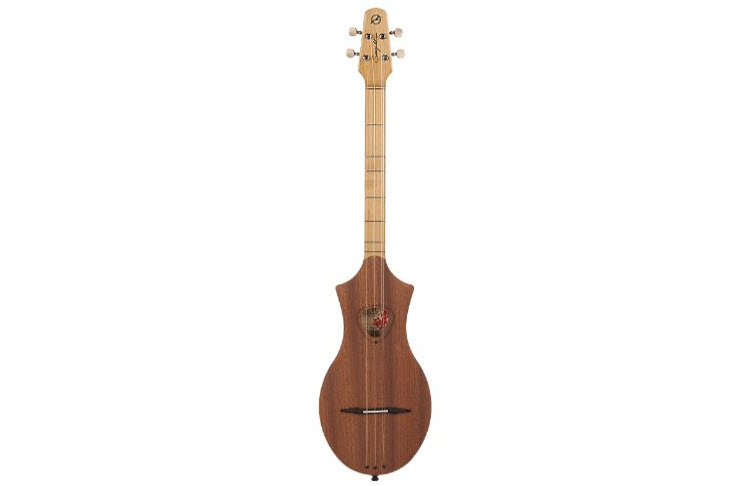
Let's start with an interesting fact; not all mountain dulcimers are similar in string count and arrangement. But while the two aspects tend to vary, you will find that most families utilize 3 or 4 strings. The Seagull Merlin SG opts for the latter configuration: a middle, a bass, plus a couple of sympathetic melody strings.
A solid mahogany top combines with a three-piece mahogany body for a deep, yet soulful sound. The structure itself is long as a banjo but thinner; more like a tenor guitar. Without going into specifics, the Merlin SG will make a great choice for a musician on the road.
The instrument's shape allows it to be played like a guitar, but you can also use a chord stick/nylon pick. The lightweight body means you can play it for extended periods, which is crucial when you're first learning to play. The vintage-style open-geared tuners will help you keep the strings tuned true. You can grab the Merlin SG for just $129 online.
Pros
-Beginner-friendly design: With 4 strings and 6 frets, this should be well-suited for first-timers.
-Solid mahogany construction.
-Easy to set up and play.
-Relatively affordable
Cons
-Doesn't come with any accessories.
-The beginner-friendly design means the Merlin SG might not be ideal for professionals.
2. Seagull 039227 Merline Spruce SG Dulcimer 4-String Diatonic Instrument
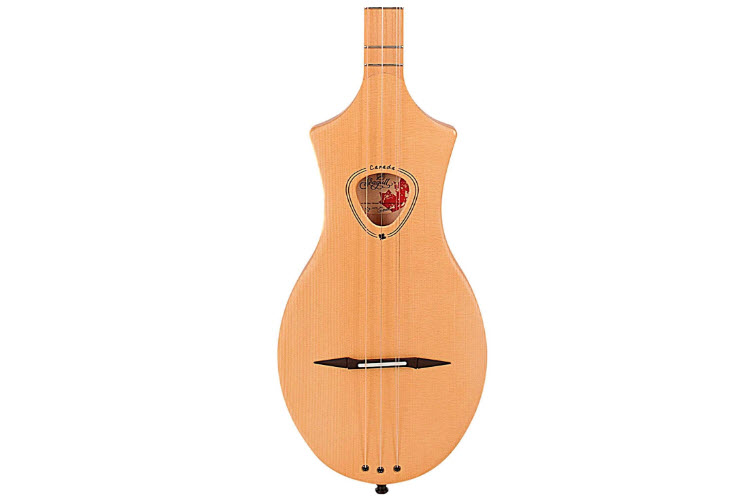
This closely resembles its Mahogany sibling described above, but has a spruce top and 3-piece rock maple body. The rest of the hardware remains unchanged; it features a mustache-style Tusq bridge, compensated saddle and vintage open-geared tuners. The drive-through neck also stays unchanged. As does the price tag of $129.
You will find that this Merlin has a brighter sound with a lot more projection compared to the mahogany model. That's all down to the spruce top. The volume and sustain of its sound are so high that some purists say it's not a true mountain dulcimer. One man's meat can be another's poison though --- the Spruce Merlin will be a great pick if you love the sound.
Pros
-Comes ready to play out of the box.
-Unparalleled sound quality.
-Beginner friendly.
Cons
-Finish is a little wanting.
-Stock strings are of poor quality.
3. AppleCreek 6-String Dulcimer GV-ACD100K
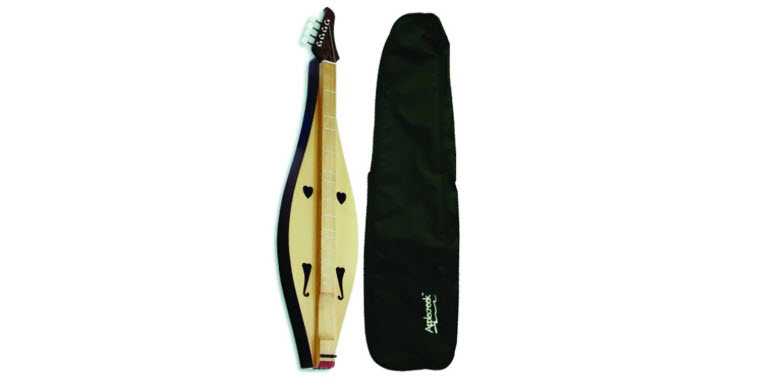
With a bright, laminated spruce top and beautifully-stained back/sides, the Applecreek ACD100K gives the impression that it's designed for pros. That one should know better than to leave it in the unseasoned hands of a beginner. Nothing could be further from the truth though: Applecreek themselves say that the ACD100K will make 'a great package for the beginning enthusiast.'
Can you take their word for it? Reviews from buyers seem to indicate so. The dulcimer's teardrop shape and lightweight build allows for an easy grip on the lap. The 4-string layout (not 6 as advertised) lets you strum effortlessly as you enjoy the sweet, warm sound. If that seems like a good enough proposition, you can pick up the ACD100K for $199 on Amazon.
Pros
-Lightweight construction and stellar build quality.
-Beautiful teardrop shape.
-Easy to tune and play.
-Comes with a padded dulcimer case.
Cons
-Price is a little too high for an introductory model.
-No warranty coverage provided: This isn't explicitly stated, but the lack of information is far from reassuring.
4. Roosebeck Emma Mountain Dulcimer 4-String F-Holes
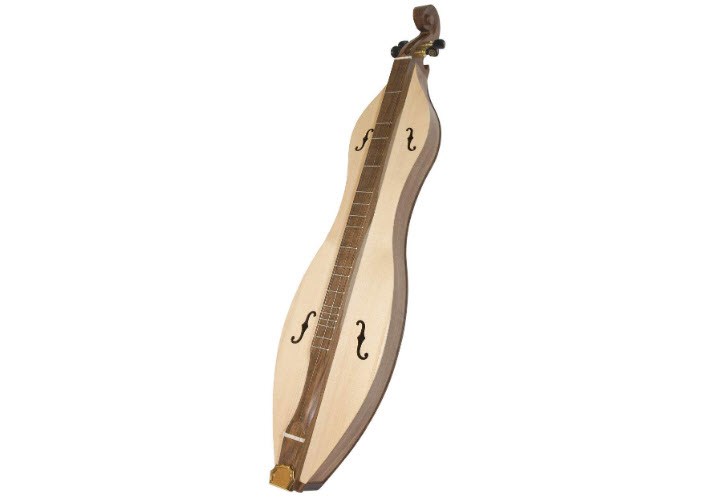
Oh boy, isn't this the most gorgeous string instrument to ever see the light of day? With a classic hourglass shape and contrasting walnut hues, the 4-string Emma Mountain Dulcimer will make you stop playing just to put it down and admire it. The delightful pairing of form and function proves why Roosebeck are among the most respected names on the folk instrument scene.
Sticking to its Appalachian roots, the Roosebeck Emma features a spruce soundboard and vaulted fretboard. Solid walnut is used for the body, neck and fretboard, while bone is preferred for the bridge and nut. Four f-hole openings and a gold, crown-shaped tailpiece complete jigsaw for a rich, warm sound.
The instrument also features a carved scroll peg head with 4 geared straight tuners. That allows for flexibility in tuning, but it's recommended to stick to the classical DAD method for ease of play. Speaking of ease, this dulcimer comes with a guide to help owners hit the ground running. You will also get a noter and pick for accessories. All in all, the Rooseback Emma will be a great pick for a price of $232.
Pros
-Superb sound, thanks to the vaulted fretboard & spruce soundboard.
-Exceptional build quality for the price.
Cons
-String slots are a little too small.
-Not suitable for beginners.
5. Johnson FI-220 Lap Dulcimer
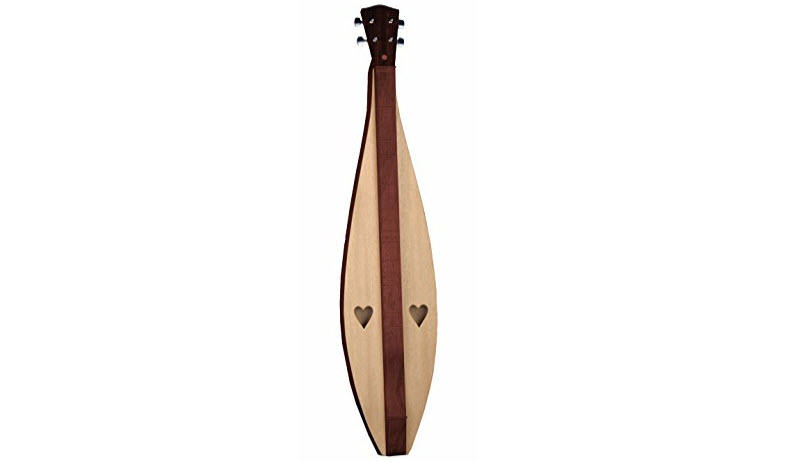
As the name indicates, the Johnson FL-220 sticks with the conventional laptop design of the Appalachian mountain dulcimer. It comes with 4 strings and heart-shaped sound holes on the mahogany body for enhanced resonance. The strumming area is scalloped to help players make the most of the 15-fret fingerboard.
With a scale length of 26.5 inches and a weight of 4 lbs, the FL-220 will be as playable as any other decent model. Just note that the bridge is positioned a little high, which means you'll have to press down hard on the strings to get a clear sound in the 'guitar position'. But as you will recall, the dulcimer is designed to be played from the lap. And this is one of the best 'true laptops' you can have for $200.
Pros
-Comes with a bespoke carry case.
-Backed by a lifetime warranty.
-Has a loud, pleasant sound.
-Holds its tune well.
Cons
-Tuning can be tricky.
6. Applecreek ACD100 Dulcimer

Like its fraternal twin sister (the Applecreek ACD100K), the ACD100 is tailored for beginners. The back, sides and top are laminated with spruce to keep the weight down at just over 2 pounds. That makes it comfortable to hold for extended periods, thus allowing beginners to get plenty of practice. The length is kept at 31 inches to suit players with smaller arms.
The ACD100 comes with 4 strings as usual (2 melody, a bass and a middle). Fret count stands at 6 and a half to provide more control when playing. The tuners aren't the most user-friendly, but that shouldn't be a problem once you're familiar with the instrument. The unit is available for a price of $117.
Pros
-Beautifully-crafted instrument that sounds as good as it looks.
-Compact and lightweight
-The included instruction sheet flattens the learning curve for beginners.
Cons
-Tuners are overly-sensitive and difficult to work with.
7. Pre-Fretted Simplicity Dulcimer Kit
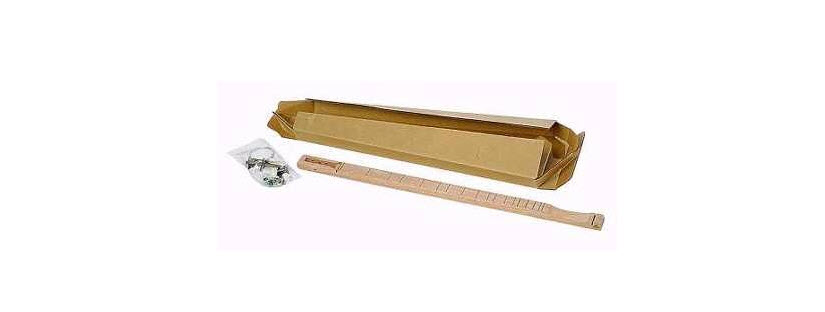
Chances are that you only want to try the dulcimer experience and don't want to overspend on something you might not like. The Pre-Fretted Simplicity Kit from Backyard Music will be your best bet. Deviating from the rest of the pack, it utilizes a 3-string layout and cardboard soundbox to keep the price low at $54.
Be warned though: this isn't as much a dulcimer as it is a kit (as the name indicates). You will have to assemble the instrument yourself from a bunch of components. Of course, the kit comes with a detailed manual to help you get going. Also included are a noter, pick, and a set of extra strings.
The sound won't be at par with other units, but it's decent enough. Handling is surprisingly good though --- some users report that it's friendlier towards beginners than the average guitar. Build quality is equally superb; the 275-pound rated cardboard is sturdy enough to withstand a bit of abuse. Just don't subject it to moisture.
Pros
-Sound quality is nice
-Very easy to play
-Great package for the price.
Cons
-Strings are not the best: You're better off investing in a better set ASAP.
8. Roosebeck Emma Mountain Dulcimer 4-String Vaulted Fretboard
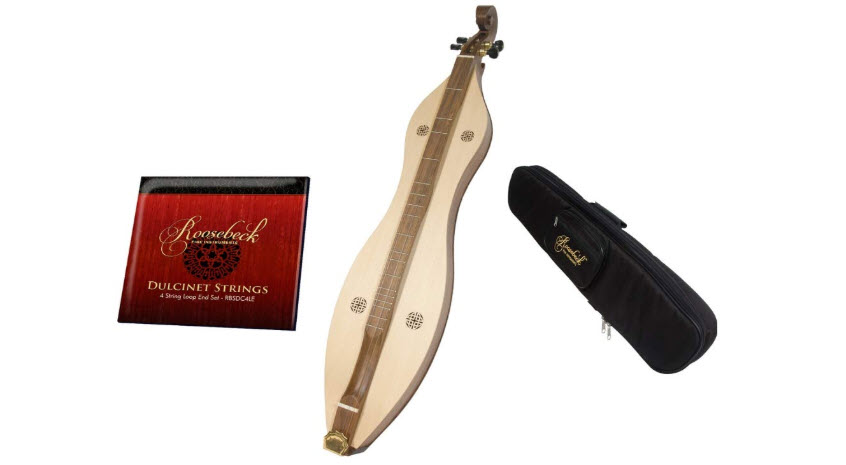
Let's say you have a bigger budget to spare, and therefore don't want to settle for a 'simplicity' kit. This variant of the Roosebeck Emma Dulcimer highlighted earlier might be what you're looking for. Like its stablemate, this is an hourglass-shaped unit with a spruce soundboard and 4 strings (2 melody, 1 brass drone and 1 middle string).
It also retains the 4 gold-colored geared straight tuners with a 4-to-1 ratio. Solid walnut is used for the body, bridge, neck, fretboard and nut to optimize sound output while keeping the weight down. Of course, the added heft will more than justify itself when you start playing the unit.
A larger body translates to a deeper, more pronounced sound. The 4 knotwork openings on the soundboard means the unit will yield a more intricate timbre. On that note, it would be fair to say that the Roosebeck Emma 4-String Spruce Knotwork is tailored for seasoned players. A price tag of $330 provides testament to that somehow.
Pros
-Lighter compared to other similar-sized models.
-Comes with a padded carry case and 4 extra strings.
Cons
-Not the most user-friendly mountain dulcimer you can find.
9. Deluxe Roosebeck 5-String Emma Mountain Dulcimer
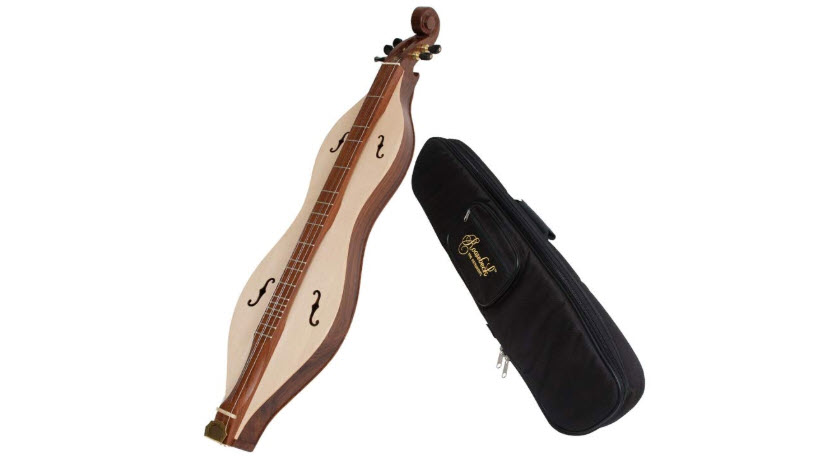
Yet another version of the Roosebeck Emma - this time a 5-string unit christened the 'Deluxe' model. With dimensions of 69.5 by 16.5 by 6.5 inches, this has twice the footprint of the standard model. Does that make it twice as good? Let's see...
On one hand, the Deluxe model retains the hourglass shape, but with tapered extensions on both ends. It also sticks with spruce for the soundboard, the quartet of f-hole openings, and the gold crown-shaped tailpiece. However, solid sheesham replaces walnut for the body, fretboard and neck.
String count is where you will find the most significant change. The Deluxe model utilizes 2 melody and 2 middle strings, with a bass drone member completing the pack. Paired with the bigger body, the expanded action allows for a wider, punchier and more pronounced sound.
This unit will also be able to play more notes compared to its less-endowed sister. In other words, it's well worth the higher price tag of $327.12.
Pros
-Offers a wider range of possibilities over the average mountain dulcimer.
-Comes with a padded carry case.
-The package ships insured
Cons
-No warranty or money-back guarantee: This can be a deal-breaker, given the steep price tag.
-Weighs a hefty 14 lbs.
10. Mountain Dulcimer Package 5 String Solid Spruce & Sheesham Pro
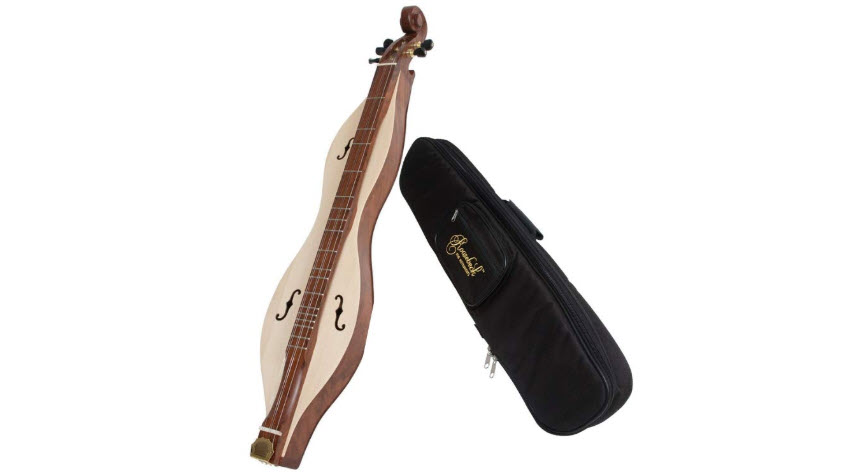
This 5-string hourglass-shaped model from Roosebeck is designed with flexibility in mind. It's narrower on one side to accommodate multiple positions, and this inverts the fingering. As a result, the instrument can be played in a guitar position just as easily as it can in the regular lap position.
To ensure it produces the rich, full sound you'd expect from an Appalachian, the dulcimer has a solid spruce soundboard with 3 f-holes. Sheesham is used for the sides, back and fretboard, with the latter arching on the lower side to free up some room. The unit comes with 4:1 geared tuners as usual, as well as a noter and pick for accessories. The whole package retails for $319 online.
Pros
-Going by user reports, this dulcimer provides a comfortable, pleasant feel in play.
-Comes with a padded gig bag.
-Solid construction.
Cons
-Warranty doesn't cover the strings, which is disappointing for a $300+ instrument.
Mountain Dulcimer Selection Tips

1. Go beyond looks.
Dulcimers are beautiful instruments with unique features and fine styling. It can be tempting to get one just because it strikes you with its elegant design or eye-catching flair. The same is true for those who might be looking for guitars, ukuleles, violins, and so on. Appearance is important if this will influence your passion for playing and practicing, but it should not be the first thing in your list of priorities. Delve deeper into the practical characteristics to know what is truly suited for you. Otherwise, you might end up with a decorative item that you will quickly lose interest in.
2. Check the quality of materials.
The kinds of materials used will have a profound influence on the quality of the sound and the longevity of the item. For dulcimers, the main ingredient is usually wood with trims. You could save a lot of money buying an instrument made of cheap wood but you may not be satisfied with the sound it will produce. It will not be full or satisfying. Most experienced players would rather spend more to get high quality hardwood on their instrument. This will increase the weight but it will also make playing a lot more enjoyable. The item should last much longer as well, since bumps and drops will not faze it.
3. Consider portability.
The normal way of playing a dulcimer is to lay it on your lap so weight is not as much of an issue as with a violin or a guitar. Your legs should be able to support several pounds with ease. In case you get uncomfortable, you could always place it on a low table instead and play as you normally would. However, it can be tricky if you are frequently travelling with your instrument. Lugging a heavy item on your back can get tiring. This is true for people who may be practicing at school or taking lessons elsewhere. A lighter and smaller option might be better, especially for those with a petite frame.
4. Match your skill level.
Before making a purchase, you should also be honest with yourself about your current skill level. Are you a complete novice when it comes to string instruments? Do you have some experience with the banjo and wish to learn something different for a change? Would you like to take this to a high level or are you content with just an elementary understanding? There are products that are marketed for beginners. These are easy to tune, cheaper to purchase, and often smaller than professional-level options. Most will be satisfied with these and they should prove to be great springboards for serious players.
5. Know your budget.
As with any purchase, you must be mindful of whether you are overspending or not. This is a niche instrument that will not yield as many opportunities to play professionally compared to others. However, those who master it have proven that they can attract enough attention to go places with their dulcimer. If this is just a passing fancy, then you don’t have to spend much for the pleasure of owning one. You can find bargains for less than $100 that should barely make a dent on your wallet. Those who have more to spare will be happy to know that professional-grade options don’t cost much more at around $300.
Types of Mountain Dulcimers
These come in a variety of shapes with each having its own distinct characteristics. For example, the most common ones have a teardrop shape wherein the fretboard runs across the length of the body. Only a short protrusion can be seen at the top where the tuning mechanisms reside. The body bulges at the sides in symmetrical fashion with holes of different shapes. Others come in a more complex hourglass shape, also known as a double box. The high notes and the low notes are in their own tone chambers. The narrow waist that provide separation enables the instrument to produce higher volume and a more balance sound.
There are also those shaped like a guitar with a long neck and a small body. The sound hole is also in the middle of the body instead of the sides. The sound is definitely slightly different. Thanks to this configuration, this is much easier to hold and play either on the lap or sideways like a real guitar. The difference is that this is more compact and has fewer strings. Most will have 3 or 4 strings, although there are variants with up to 6 strings.
Top Mountain Dulcimer Brands
Only a handful of manufacturers make this instrument. Capritaurus was the first company to mass-produce dulcimers. Nowadays, the most notable brands include Applecreek, Roosebeck, and Seagull Merlin.
Average Mountain Dulcimer Pricing
The average price of dulcimers is around $150. You should be able to find several options with decent quality at that price point. However, it is possible to spend half of that if you are aiming for beginner models. On the other hand, you could also double this value to get yourself a pro option.
Questions & Answers
1. What is the best mountain dulcimer to buy?
As always, the best instrument is the one that is suitable for the player. Even a beginner dulcimer could be considered as the best buy if this is for a novice student. It should be comfortable for the user and produce satisfying sound. It should also be within the budget to make it accessible.
2. Is mountain dulcimer hard to play?
No, not at all. There are only a few strings compared to more popular instruments like the rhythm guitar. The fret patterns are also simpler so playing this is relatively easy. Most should be able to learn the basics right away and achieve mastery with constant practice. This is also non-taxing in a physical sense as you will play it by laying it flat on your lap while strumming with your right hand and fretting with the left hand. Some choose to lay it instead on a wooden table. Just note that anything it touches can change the sound, with tables acting as a resonator to increase volume.
3. Who invented the mountain dulcimer?
The origins of the instrument have been nothing more than speculation for a long time because of the lack on historical records on the matter. What we know is that it was first found in the Appalachian mountains with the Scotch-Irish communities that settled there in the early 1800s. How it developed was a mystery as there is no instrument that is similar to it in either Ireland or Scotland at the time. Answers began to emerge after extensive research that started in the 1980s. It was found that the dulcimer shares many of the same traits as older European stringed instruments, particularly those in Germany, Norway, Sweden, and France.
One theory is that the settlers may have wanted to recreate a violin but were unable to do so due to the complexity of the instrument. They did not have the proper tools to make the curves and other features. However, they were skilled enough to create a totally different kind of instrument that we now know as the mountain dulcimer. Modern variants can trace their roots to the 1950s when the urban folk scene helped to usher a revival. Known musicians would use them during performances which piqued the interest of the people. Mass-production soon followed, as well as various innovations and features.
4. How much does a mountain dulcimer cost?
The amount of money that you will probably have to spend to acquire this instrument is relatively low compared to more popular musical tools. Options start from under $100 which is suitable for beginners. At very little cost, you can begin to experiment and see if this is for you. They look great so, if nothing else, they should still be a nice addition to your collection of folk instruments. If you would like something with a higher quality, then be prepared to double or triple the spending. This is not so bad since the professional-grade instruments for other musicians can cost thousands of dollars.
5. What kind of strings does a dulcimer use?
These instruments use metal wire strings that are not much different from the ones that you would see in a typical guitar or banjo. In fact, in the early days when there weren’t specialized strings for each type, people would routinely use banjo strings for their dulcimers. Very few knew how to play it back then, or that it even exists, so it was up to the individual owners to improvise. String gauges that are normally used go from 0.026″ to 0.010″ in diameter. Thicker or thinner ones might also be used depending on the preferences of the user.
6. How many strings does a mountain dulcimer have?
The vast majority will have only 3 strings. This makes them easy to play as the chords are simple. Others may have 4 to 6 strings which progressively increase the complexity. Take note of this when selecting a mountain dulcimer.
